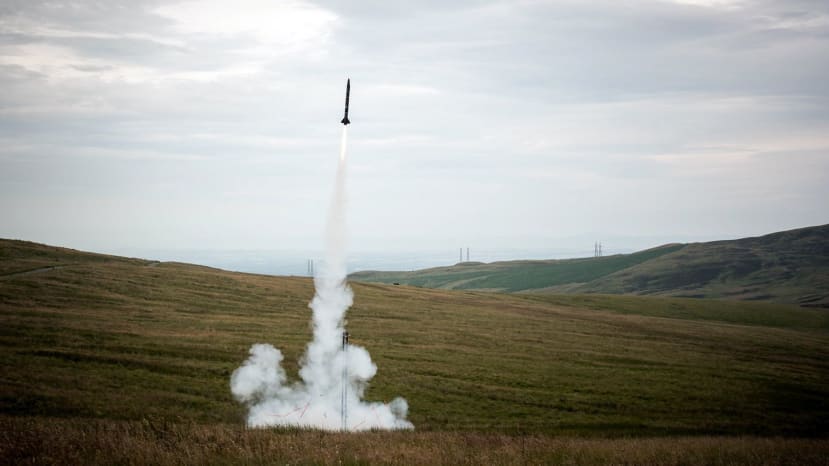Karman Space Programme: Introduction
Follow projectHow do you feel about this article? Help us to provide better content for you.
Thank you! Your feedback has been received.
There was a problem submitting your feedback, please try again later.
What do you think of this article?
 Karman Space Programme is a team led by students from Imperial College London that aims to be the first student-led team to design, build and launch a reusable rocket past the Kármán Line.
Karman Space Programme is a team led by students from Imperial College London that aims to be the first student-led team to design, build and launch a reusable rocket past the Kármán Line.
Parts list
| Qty | Product | Part number | |
|---|---|---|---|
| 1 | STMicroelectronics STM32H743VIT6, 32bit ARM Cortex M7 Microcontroller, STM32H7, 400MHz, 2 MB Flash, 100-Pin LQFP | STM32H743VIT6 | |
| 1 | TE Connectivity Barometric Pressure Sensor, 1200mbar Operating Max, Surface Mount, 8-Pin, 6bar Overload Max, QFN | MS560702BA03-50 | |
| 1 | STMicroelectronics 6-Axis Surface Mount Accelerometer & Gyroscope, LGA-14L, SPI, 14-Pin | LSM6DSV16XTR | |
| 1 | Texas Instruments Digital Temperature Sensor, Digital Output, Surface Mount, Serial-I2C, SMBus, ±3°C, 8 Pins | LM75BIM-3/NOPB | |
| 1 | Texas Instruments, Intelligent Power Switch 10-Pin MSOP | INA226AIDGST | |
About Us
Karman Space Programme (KSP) is a team of 70+ students from Imperial College London, aiming to be the first team to reach the Kármán Line - 100km - with a reusable rocket. We launched our first rocket, Nebula, in July 2022, and plan to launch our Orion, Vega and Aurora rockets in 2023 & 2024. We aspire to design innovative solutions to the challenges faced in reaching space, in a sustainable and cost-effective way.
Our Values
Our mission is to make space travel more accessible for all. As a team, every team member strives to embody our values of sustainability, innovation, and integrity as we challenge the way student teams design, test and build rockets. With sustainability at our core, all our rockets are designed to be fully reusable, from the recovery systems we design to the regenerative liquid rocket engines we are developing - we are pioneering the effort to make space for all.
Vega
Through 2023 & 2024 KSP will be attempting to launch 3 flagship rockets.
Summer 2023: Orion
Spring 2024: Vega
Summer 2024: Aurora
Through the generous sponsorship provided to us by the RS Grass Roots team, we will be funding the development of our Vega rocket. Vega will be a fully-reusable, regenerative liquid engine space vehicle, that will aim to reach an altitude of 50km. This will serve as an ideal test platform, before proceeding with the development of our spaceshot rocket, Aurora.
At the time of writing, our team has produced our Conceptual Design Review, a report which evaluates the feasibility, viability, and suitability of our proposed Vega vehicle. This was a critical step in our design process and has allowed us to formalise our ideas, in preparation for rapid prototyping in the upcoming months, followed by our Preliminary Design Review.
With our sponsorship from RS, this enables us to experiment with our ideas and designs that we have outlined in our prototyping phase, as we begin building the subsystems required. In particular, our Avionics System will rely critically on many components that RS provide, such as Temperature Sensors, Pressure Sensors, and the Central Processing Unit.
Avionics
Avionics (Electronics Applied in Aviation) are a critical part of our vehicles, and is the subteam that our sponsorship from RS that will be most advantageous for.
To ensure the success of our missions, our vehicles must be capable of receiving commands from Control Units, to launch, remain on the desired flight trajectory, and deploy recovery parachutes. These commands are pre-programmed before flight to be triggered at certain events.
Once commands have been received from the Control Units, the Actuators on the vehicle must execute the commands successfully. The control functionality for our vehicle includes: igniting the regenerative liquid engine for launch, controlling the throttle by open and closing valves to the fuel tank to ensure desired flight trajectory and popping the nosecone and deploying the recovery parachutes during descent.
An important function of our Avionics System is to capture, record and log data for in-flight and future analysis. Data must be relayed back to the ground control station in real-time using a telemetry link, so the behaviour of the rocket can be analysed to evaluate the success of the mission and detect any malfunctions. Our vehicles will utilise several sensory inputs such as: GPS, IMUs, Barometers, Temperature Sensors and Radiation Sensors. Our system does not have an equal dependency on all of these sensors, as the performance of some is more critical than others, for example, GPS, IMUs and Barometers can all derive altitude, which is critical information for evaluating the success of our mission and so are more important than temperature or radiation sensors.
Data Acquisition implies data retention, and therefore memory will be included on our system to retrieve data in addition to data relayed back to the ground in real-time. Multiple of each type of sensor will be included for redundancy, and several sensors to derive certain values. A failure that produces anomalous values could be mission-critical if there are not enough redundant sensors to ensure that the anomalous values can be ignored.
This combination of Command, Control and Data Acquisition is the key to the design of our Avionics.
Publicity
Thus far, we have been fortunate enough to have our teams’ achievements acknowledged by many major new organisations, and we are immensely grateful to all those who have supported us. To read more about us, please take a look at the following articles, and check out our website and social media pages.
Imperial College: https://www.imperial.ac.uk/news/238433/imperial-students-celebrate-first-test-launch/
BBC: https://www.bbc.com/news/uk-scotland-glasgow-west-62198101
Website: https://www.karmanspace.co.uk/
LinkedIn: https://www.linkedin.com/company/karmanspaceprogramme
